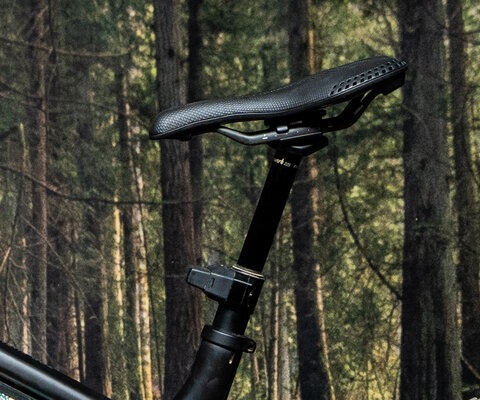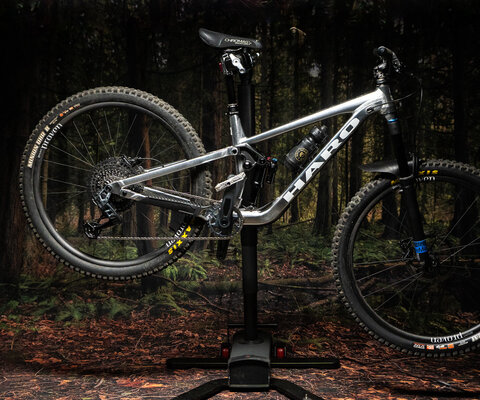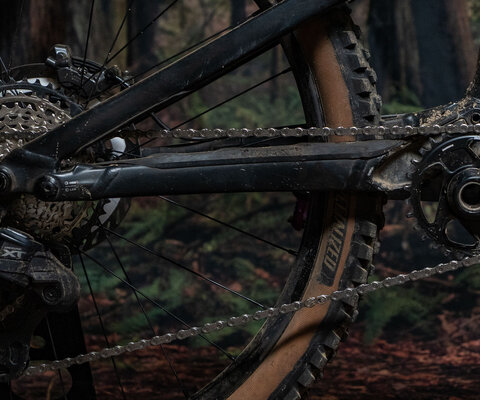
OneUp Wave Pedals Component Review
Words and Photos by Cy Whitling
A new take on pedal profile.
OneUp has been on a tear this spring with new and upgraded cockpit and pedal options. First came the clip pedals, then higher rise bars, and now, new Wave flat pedals. Flat pedals are simple, right? Stick some pins on there, make them in pretty colors, and sell them to neanderthals like me who refuse to ride clipless options.
OneUp has not followed that script though. Instead the brand has thrown a bunch of research time into figuring out how to improve on its existing aluminum pedals. The result? A unique new profile that OneUp says combines the best attributes of concave and convex pedals for more grip and ground clearance.
OneUp Wave Pedal Details
- Thickness: Axle 14.2mm / Edges 11.5mm
- Size: 107 mm x 110 mm
- Bushings/bearings: 1x inboard Igus bushing and 3x outboard cartridge bearings
- Weight (one pedal): 178 g
- Price: $159
I am a flat pedal snob. I prioritize traction and consistency with my pedals, and years ago I spent plenty of time on OneUp’s original aluminum and composite pedals before ultimately abandoning them for alternatives with more grip. So I was cautiously optimistic about these new Wave pedals, but that caution has proven unwarranted. These are significantly more grippy and less frustrating than OneUp’s previous pedals while still providing better ground clearance than traditional concave pedals.
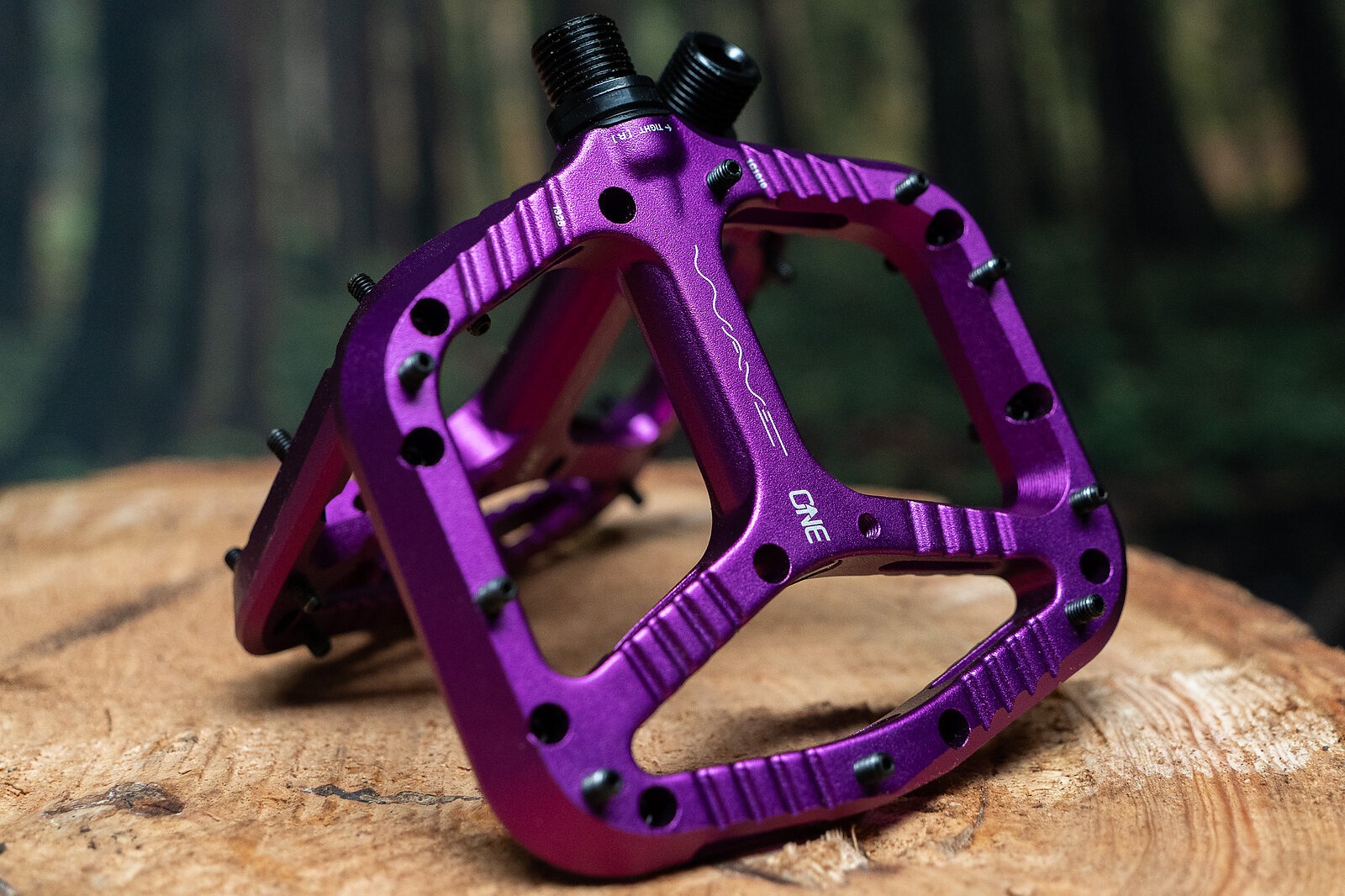
Pedal Profile
Good flat pedals are not actually flat. Instead, they’re generally convex (the axle is the thickest part of the pedal, with slimmer front and back sections, or concave (the leading and trailing edges are thicker than the center.)
That choice between concavity and convexity is very personal, but generally concave pedals offer better grip and stability, while proponents of convex pedals say they make it easier to reposition your feet, and deliver better ground clearance. For the record, I am firmly in the concave camp. I want all the grip, and I’ve found that convex pedals cause arch pain and foot cramps on longer descents.
With the Wave, OneUp claims to have melded the best of both worlds. The pedal is concave in front of the axle, and convex behind it. Because this happens on both sides of the pedal at once, it results in a flowing wave shape that has better ground clearance than traditional concave pedals, but much less of a central bulge than convex ones.
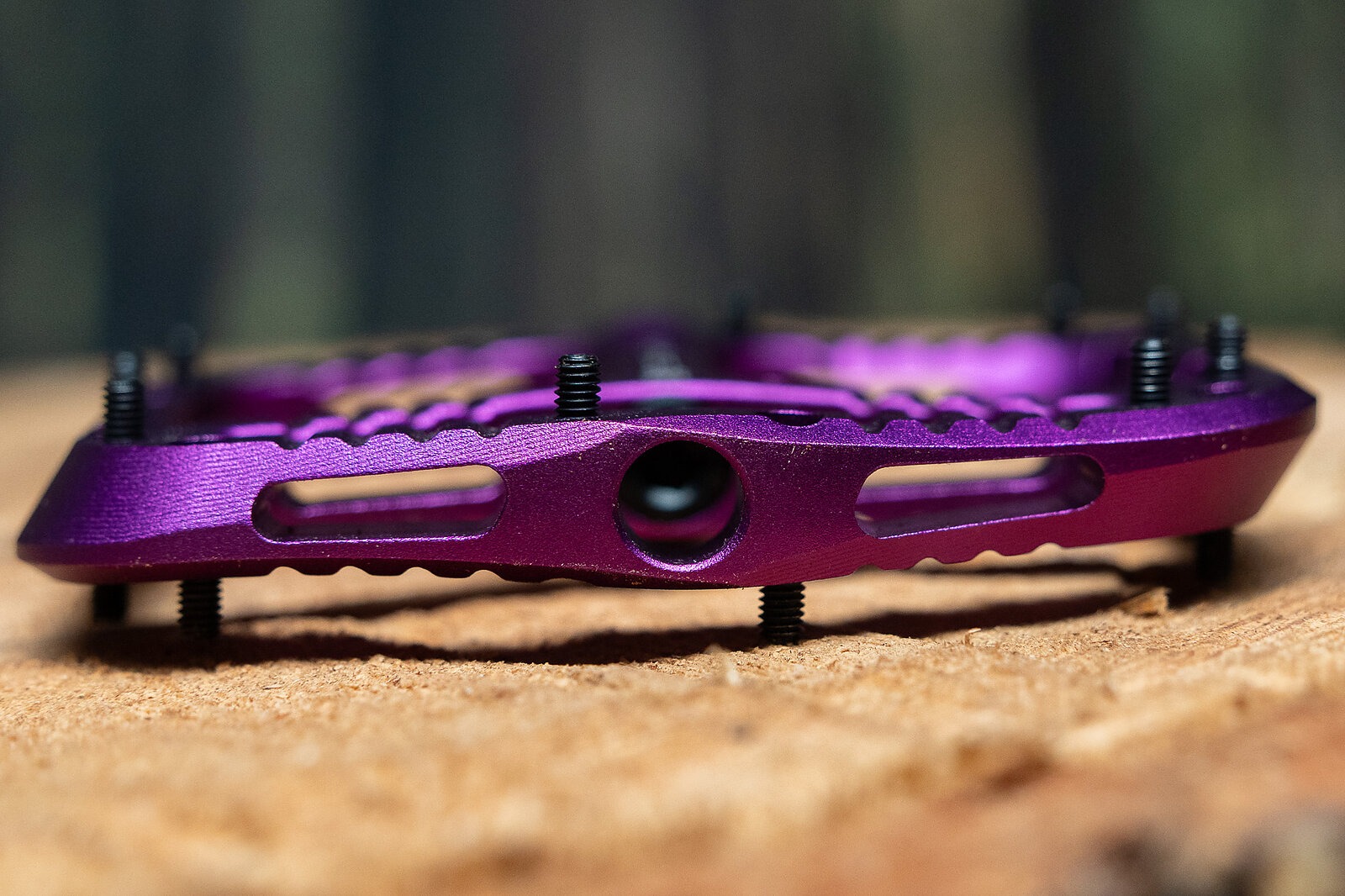
How does the Wave actually stack up in terms of real-world dimensions? I compared it to a few of my favorite flat pedals:
The OneUp Wave has a 107 x 110 millimeter platform, that’s 11.5 millimeters thick at the edges, and 14.2 millimeters thick at the center. The Tenet Occult is 110 x 105 millimeters and is 14 millimeters thick at the center and 16 at the edges. Deity’s TMAC is also 110 x 105 millimeters, and is 14 millimeters thick at the center and 17 at the edges. Finally, my go-to pedal, the Deity Deftrap, is 113 x 103 millimeters, 18 millimeters thick at the center, and 21 millimeters at each edge.
So the Wave has a very similar shape but it is thinner at the edges—by a decent amount—than any of those options.
Additionally, the Wave’s pins aren’t set perfectly perpendicular to its center axis. Instead they angle 10 degrees forward, in the direction you’re riding, so that they’re vertical when you’re riding with your heels dropped. The Wave comes with nine pins installed on each side, and have holes for an optional 10th pin. They also come with spare pins, and are compatible with OneUp’s older solid pins that can be shimmed to length, as well as the new hollow hex pins.
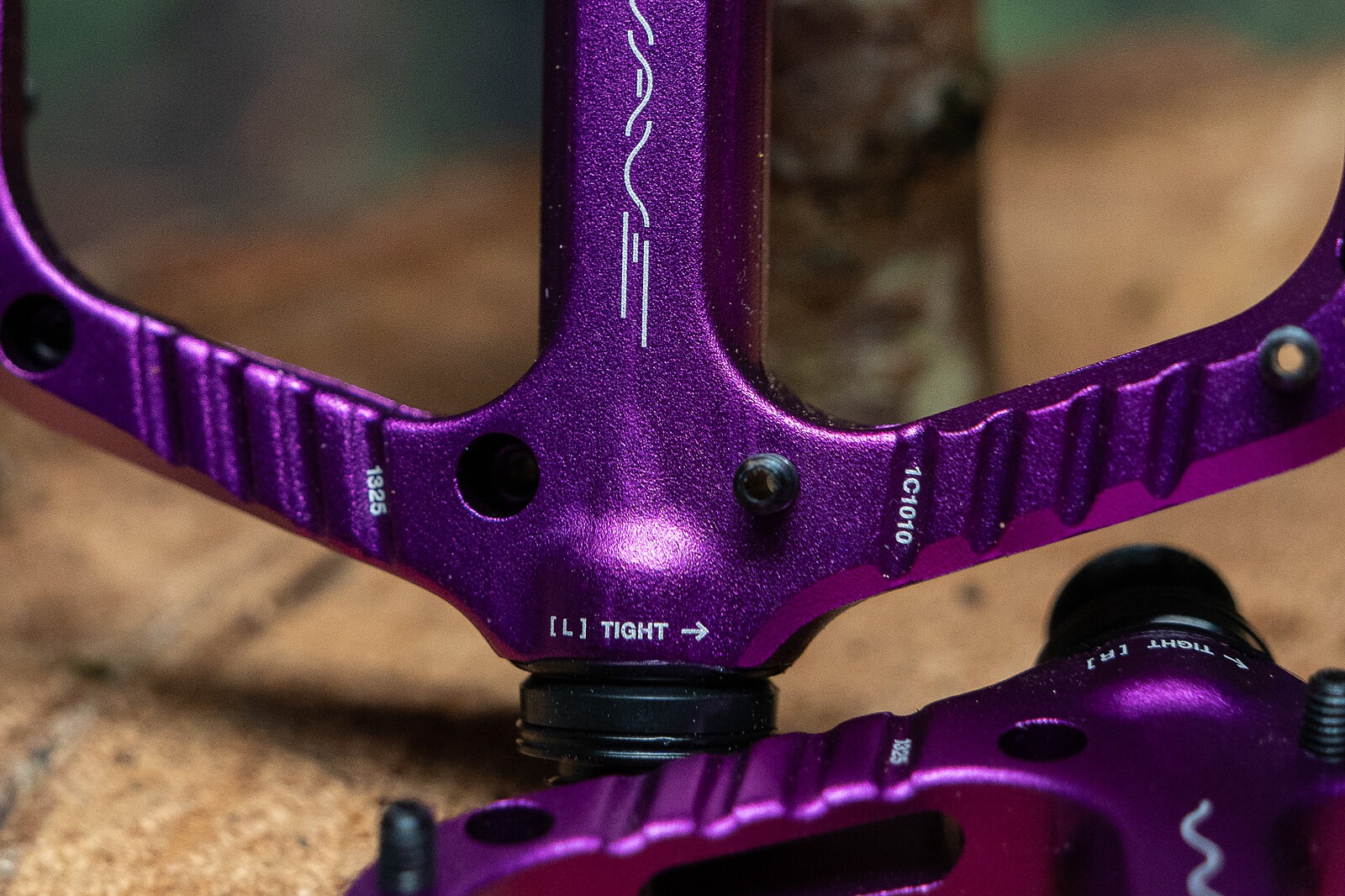
Pedal Grip
I do not care how many buzzwords or how much "science" went into a flat pedal. If it doesn’t grip my foot securely, I am absolutely uninterested in riding it. I want lots of grip consistently. That’s why I run Deity Deftraps on all my review bikes—they’re the most affordable option that I trust.
Luckily, these OneUp Waves have great traction. I would rank them as just a tiny bit less grippy than the Deftraps, as well as a touch less locked in than Tenet’s pedals which are the grippiest I’ve written.
They have noticeably more traction than OneUp’s previous alloy or composite pedals, by fair margin. Some of that is due to the bearing bulge. It’s much less prominent on these than on OneUp’s previous pedals, it’s still there, but I can’t feel it under my feet at all. Instead it feels like I’m nicely suspended on the pins, and when I push into the pedal the grip increases, instead of high-centering me on the gripless center of the pedal.
I think the Wave’s concave front sections get a lot of credit here. They allow the ball of my foot to sink naturally within the frame of the pedal, and put more pressure onto the pins, without stressing my foot uncomfortably.
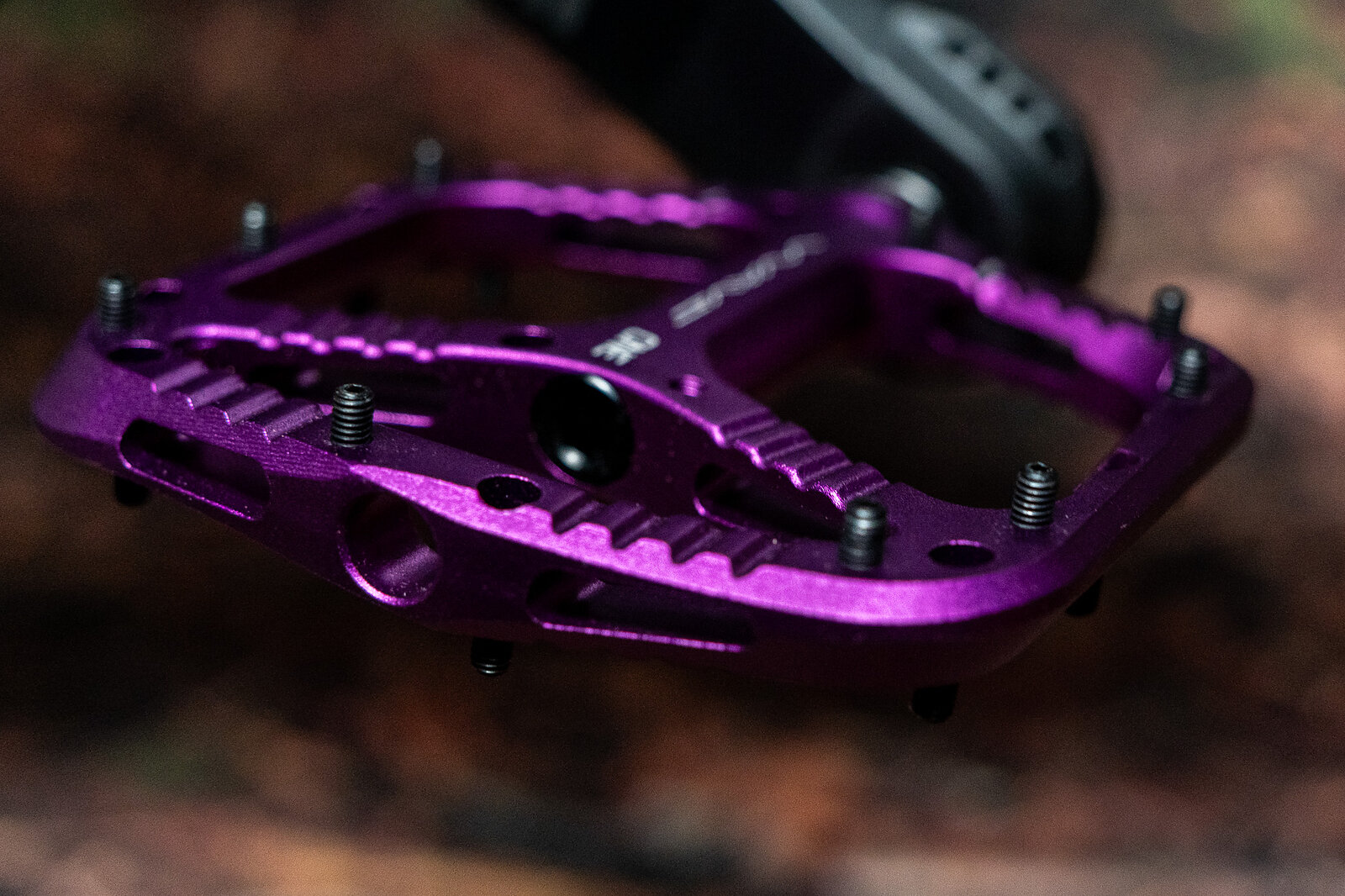
Ground Clearance
The Wave’s grip well. That’s great. But lots of pedals grip well, so do they bring more clearance to the table? Yes, but how much that matters to you will depend on your riding style and trails. By the numbers the Wave is 3.25 millimeters thinner on its leading edges than the Deftrap. That’s not much, but pedal strikes operate on a paper thin margin. I have a pretty good awareness for where my pedals are, and if they’re going to strike, and I’ve had a few times on the Waves where I’ve winced and braced for impact only to skim on by. It’s not game changing, but it’s noticeable and appreciated.
I tend to run composite flat pedals because I’ve found that they glance and glide off rocks better than aluminum options, instead of grinding to a halt. And while I’d love to see a more affordable composite version of the Wave, the increased clearance is good enough that I’d happily run these on any bike.
Performance
The Wave spins on a new three-bearing and Igus-bushing layout that OneUp says should increase their durability over previous pedals. Each set of pedals includes a thin-wall socket to facilitate your pedal service and, out of the box, mine have spun smoothly and silently. Of course it’s only been a few weeks of mostly dry riding, so I’ll check in if and when anything changes there.
Beyond that, the Wave's design may sound exotic, but it looks totally normal. Within a few minutes of riding I’d completely forgotten that I was on a new, different-profiled pedal, and that’s a very good thing. They deliver good enough traction that I’m not frustrated on the up or the down, they don’t give me the same foot cramps as the previous convex OneUp pedals did, and they skim through tight spaces better than my old, reliable Deftraps. They just work, which is what I’m looking for in a set of flat pedals.
For Now
If you’re a flat pedal connoisseur looking for concave security combined with convex clearance, OneUp’s new Wave pedal deserves your attention. They perform well, and are available in a nice selection of anodized colors to boot.
Learn more: OneUp
